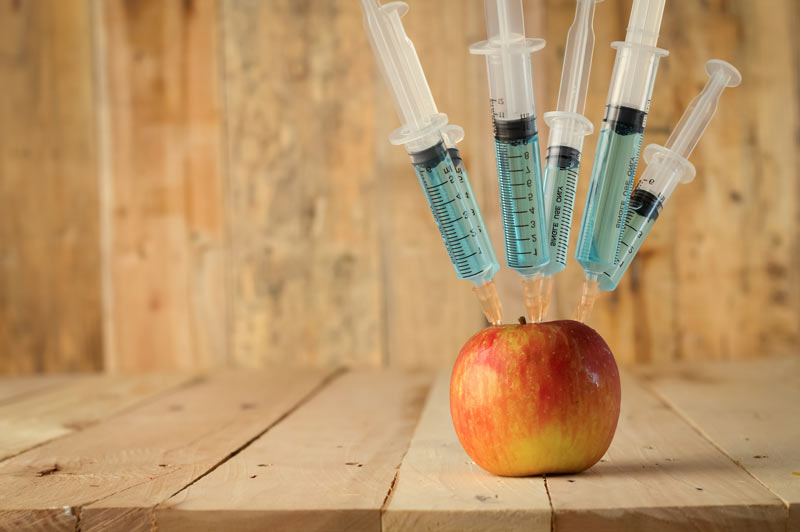Food Quality GMO & Organic
GMO foods are foods that have been changed genetically at the cellular level. They have been altered – sometimes with the same species and sometimes cross species – to make a crop more resistant to certain pests or even give it a particular appearance or flavor. These foods are then called GMO, or GE, or GM foods.
The main reason that GMO foods are created is to survive high quantity application of chemical herbicides and pesticides. Some GMOs even make the plant produce the insecticide on their own.
In the USA the plants most likely to be GMO, in order of prevalence, are:
- * Sugarbeets
- * Soy
- * Corn
- * Cotton
- * Canola
- * Papaya
- * Zucchini
- * Yellow Summer Squash
- * Alfalfa
Due to the proliferation of GMO crops such as the above, and the use of them in creating derivative products like crackers, cereals, sugars, and other refined foods, it can be very difficult to avoid GM foods and GMOs. Unlike most other countries here in the US there is no requirement for government labeling for GMO products.
However, today there is a movement to help consumers choose wisely by choosing certified organic products, and
Non-GMO Project Verified products. If you eat organic, and avoid processed food, and avoid eating things with artificial colorings, flavorings, preservatives, hydrogenated oils, high-fructose corn syrup and other known GMO foods, then you can mostly avoid GMOs.
Keep in mind that even certified organic and certified non-GMO crops can sometimes become contaminated with GMO due to the problem with pollen drift.
Most people agree that choosing organic products will be better for your family due to the following reasons:
* Less risk of toxic exposure
Plants grown for human consumption that has been doused with highly toxic herbicides and pesticides just aren’t good for you or your family members to ingest.
* More supportive of local farms
When you buy organic, you are more likely purchasing locally since the shelf life of organics is shorter. Even Walmart is sourcing organically grown crops on a local basis.
* Better for the land
When growing organic crops, the soil, water and air quality are protected with better growing practices like crop rotation, composting and so forth. This can ensure fertile farmland for centuries.
* Organic tastes better
Let’s face it; organic tastes better. You know that most tomatoes you get at the grocery store were picked before they were ripe, aerated, radiated, and finally become red but are without flavor compared to organically grown versions.
To avoid eating GMOs, you must:
- Buy organic, which is not allowed to use GM inputs
- Buy products that are labeled Non-GMO
- Buy products listed in a Non-GMO Shopping Guide
- Read labels and avoid the at-risk ingredients, such as soy protein isolate, lecithin, high fructose corn syrup, dextrose, maltodextrin, and all corn derivatives, canola, and cottonseed oil, etc.
[progressally_complete_button text=’Mark As Done’ objective_id=’all’]
[accessally_has_any_tag tag_id=’1082086′ comment=’Sugar_tag’]
[accessally_course_navigation prev_button=’Previous’ next_button=’Next’][/accessally_has_any_tag]

